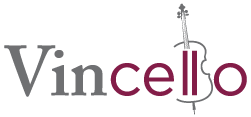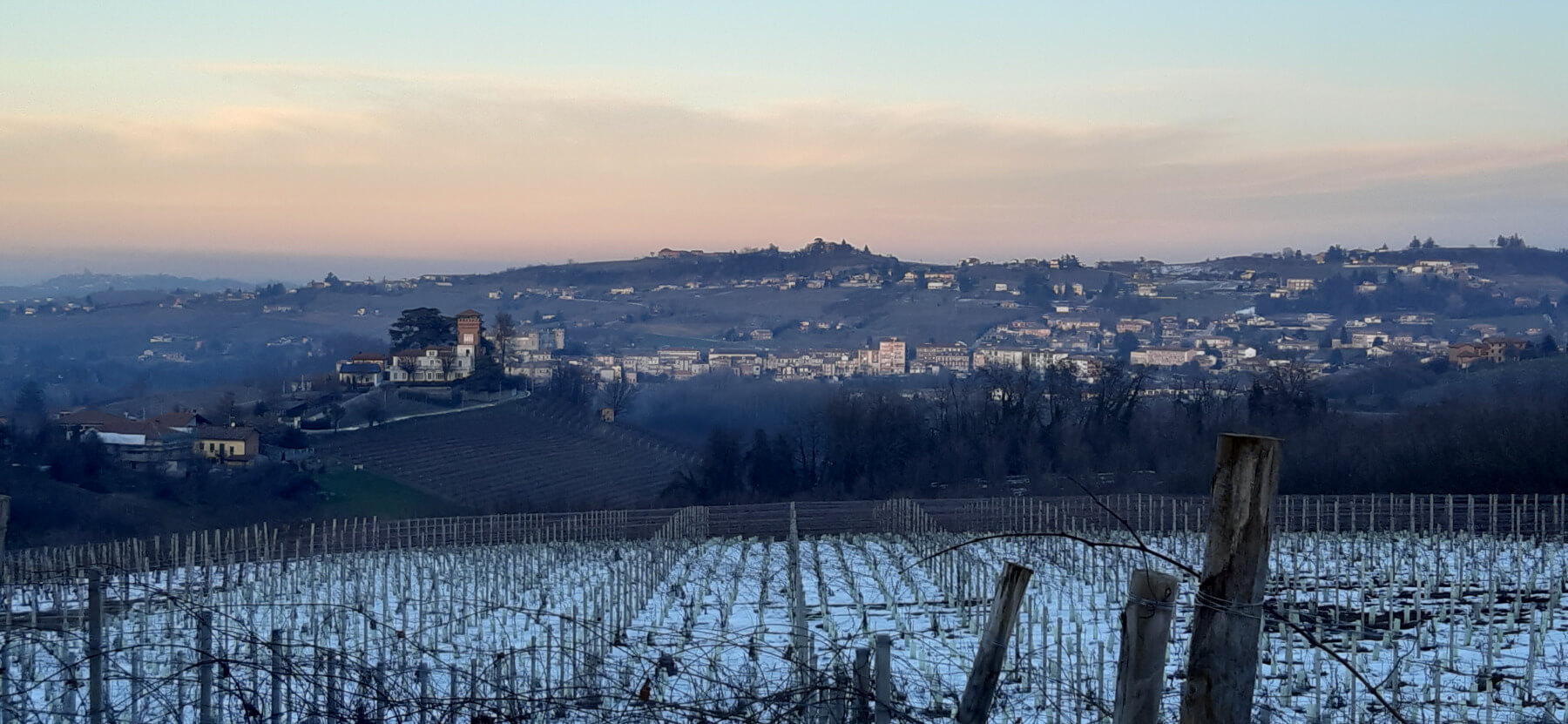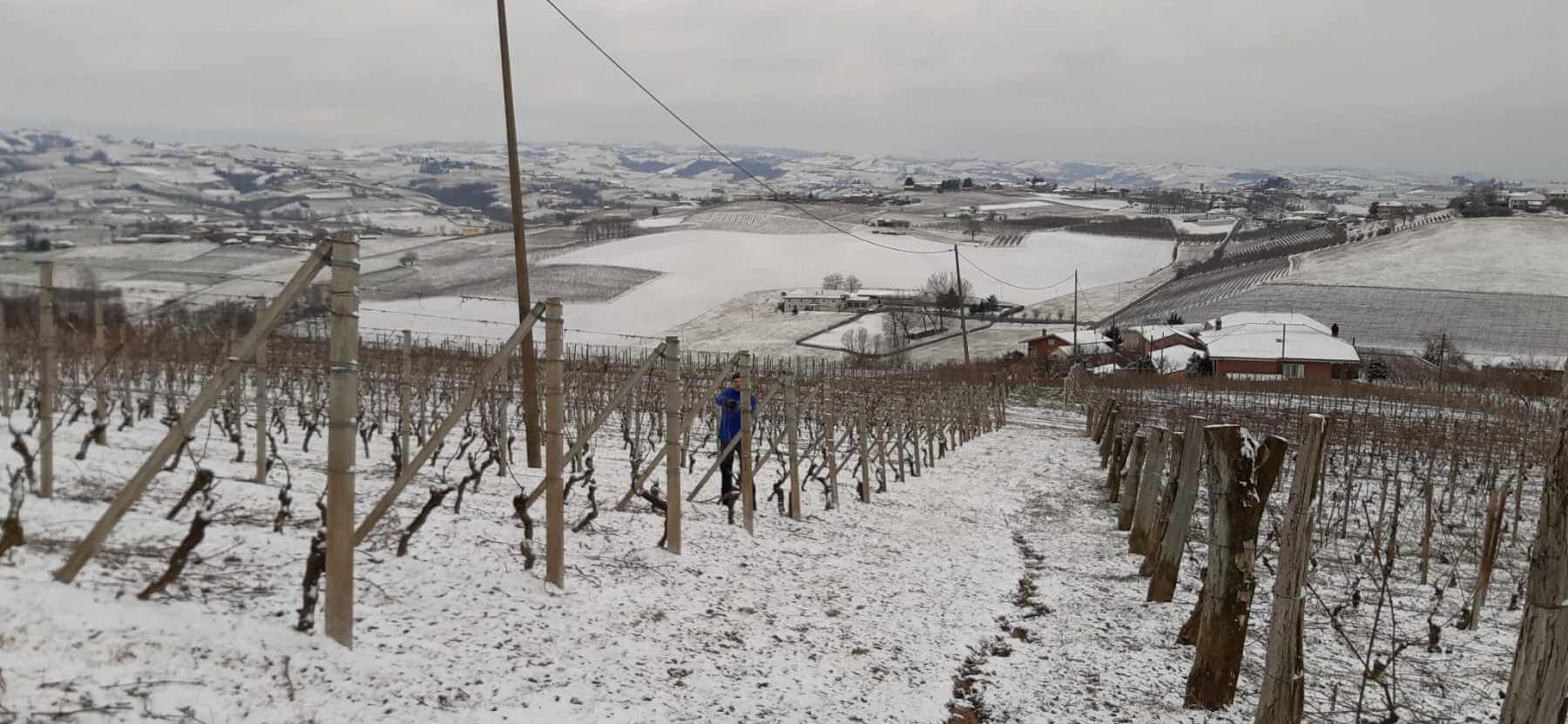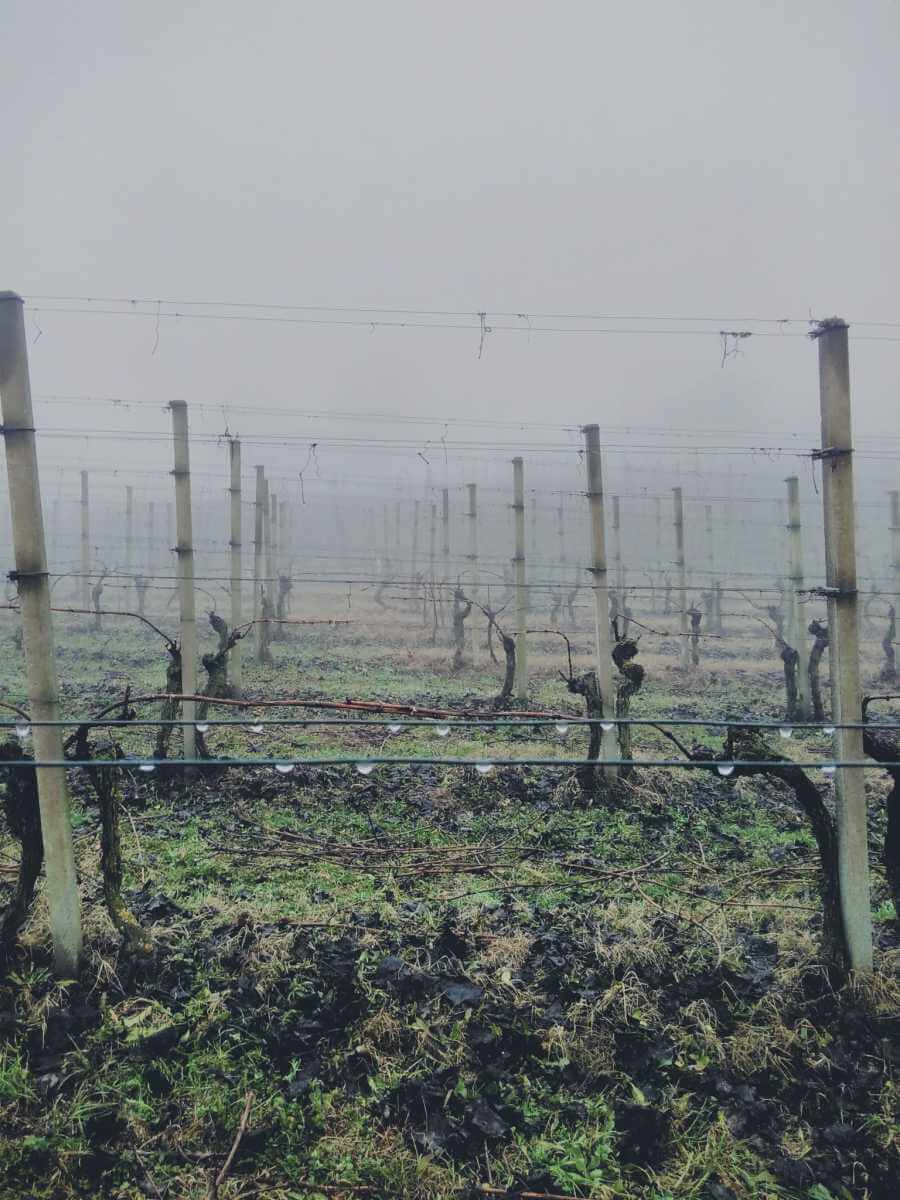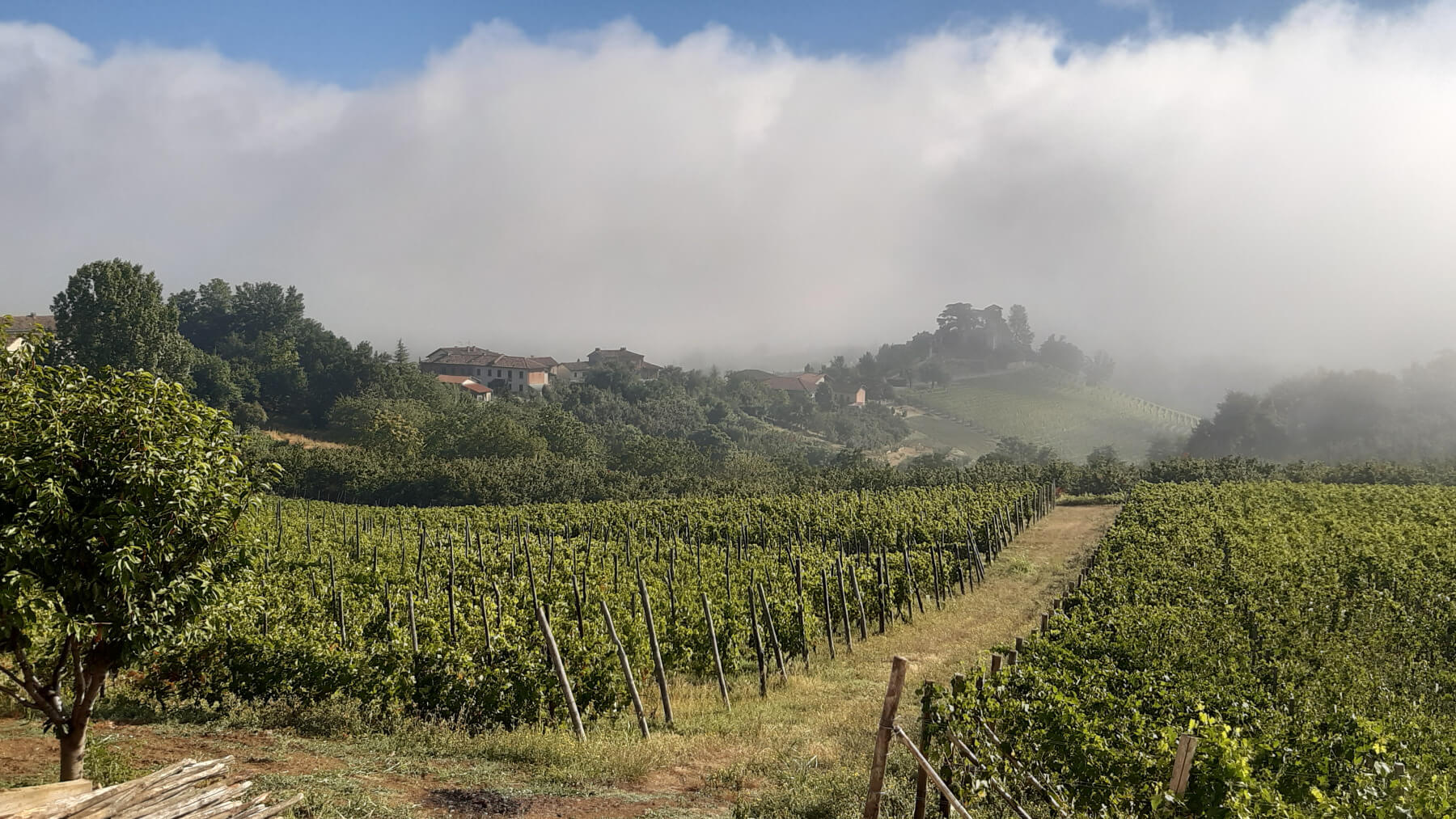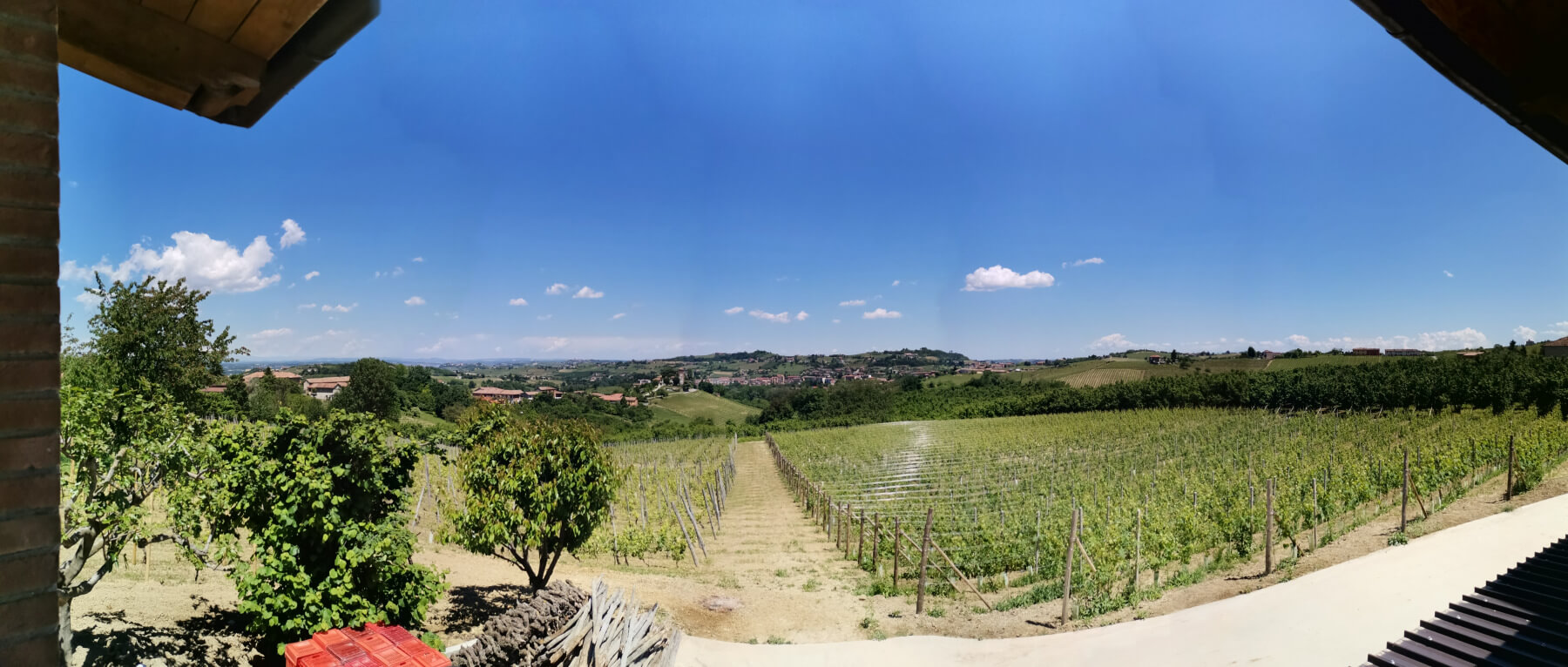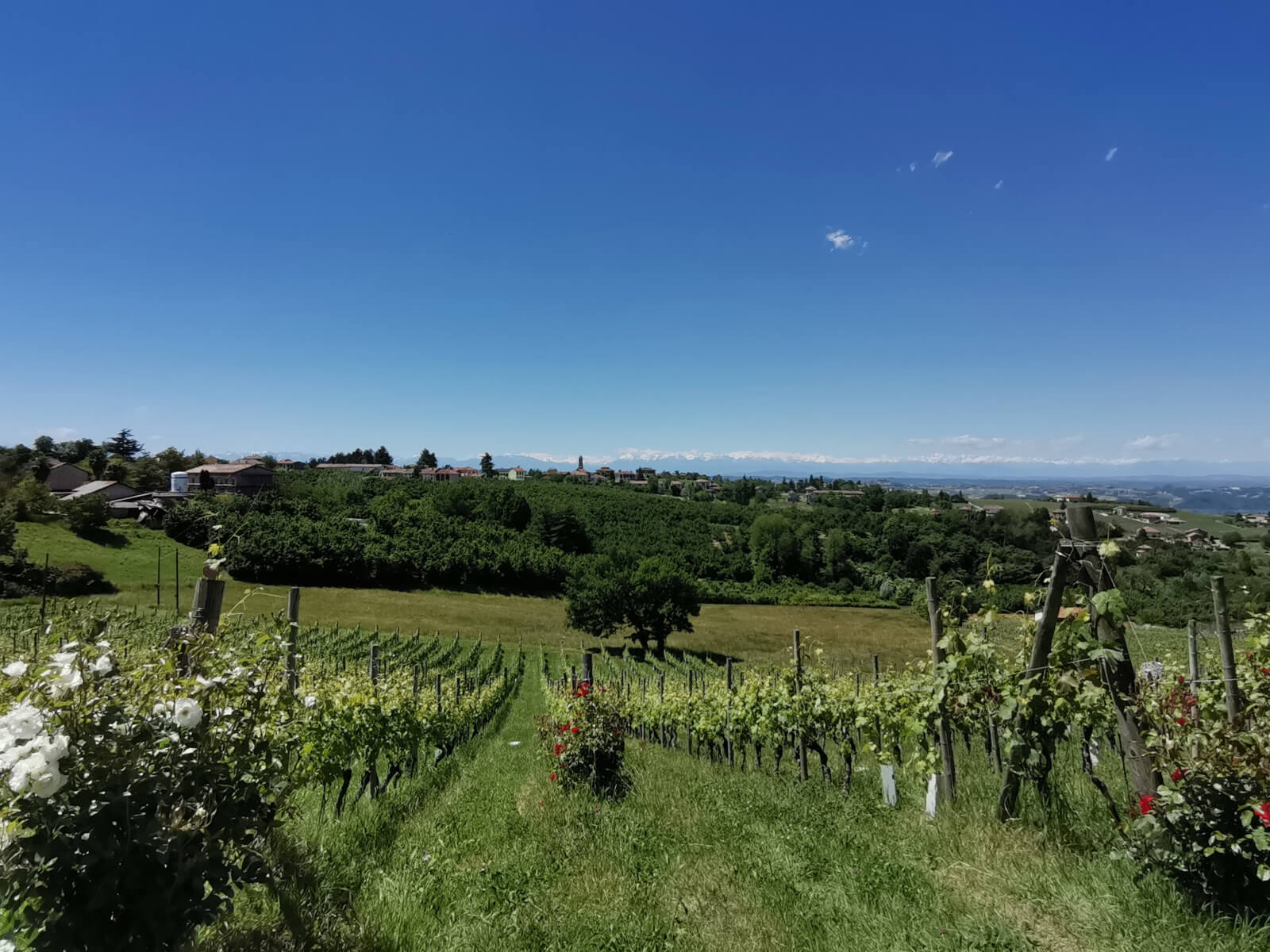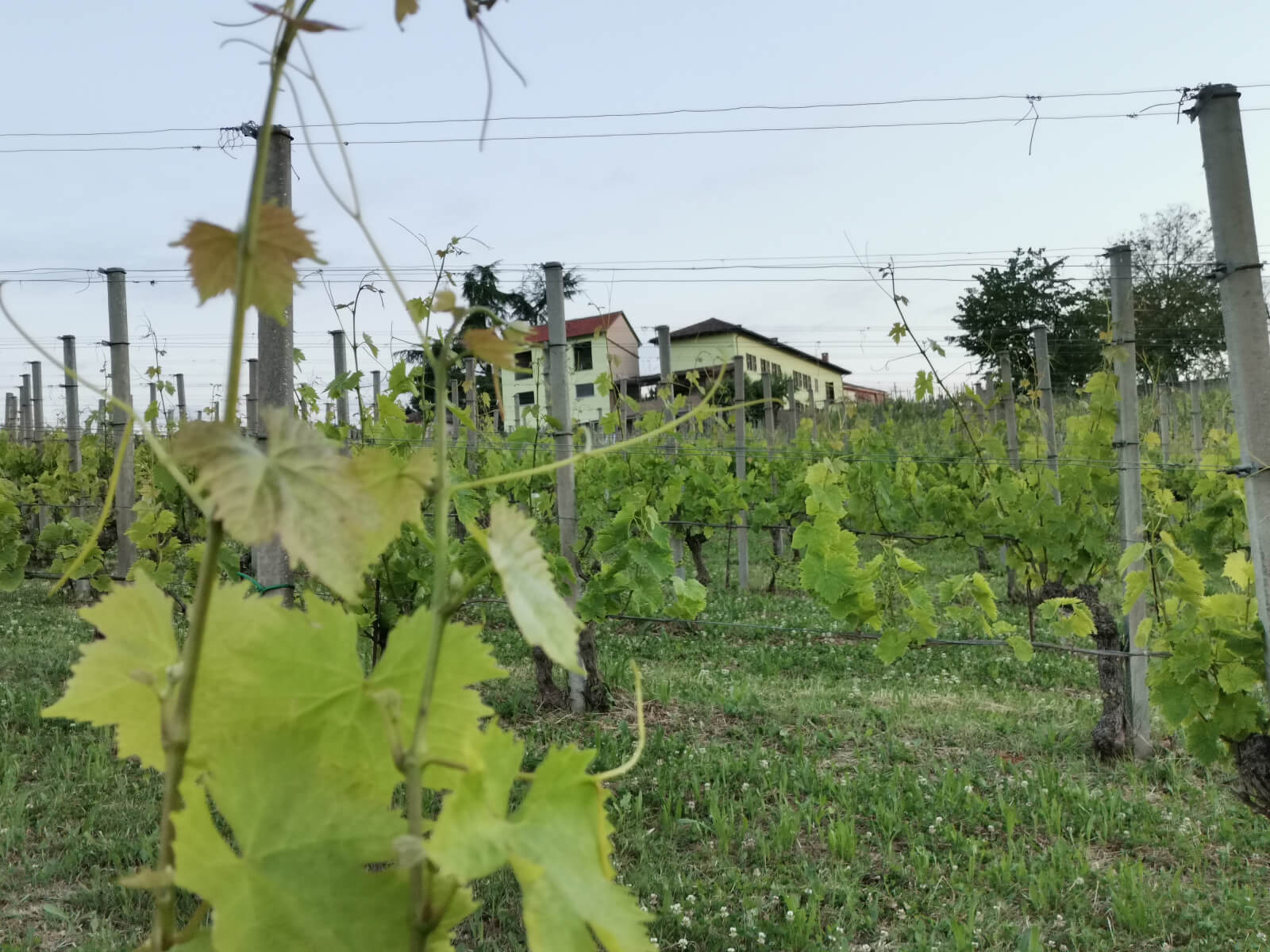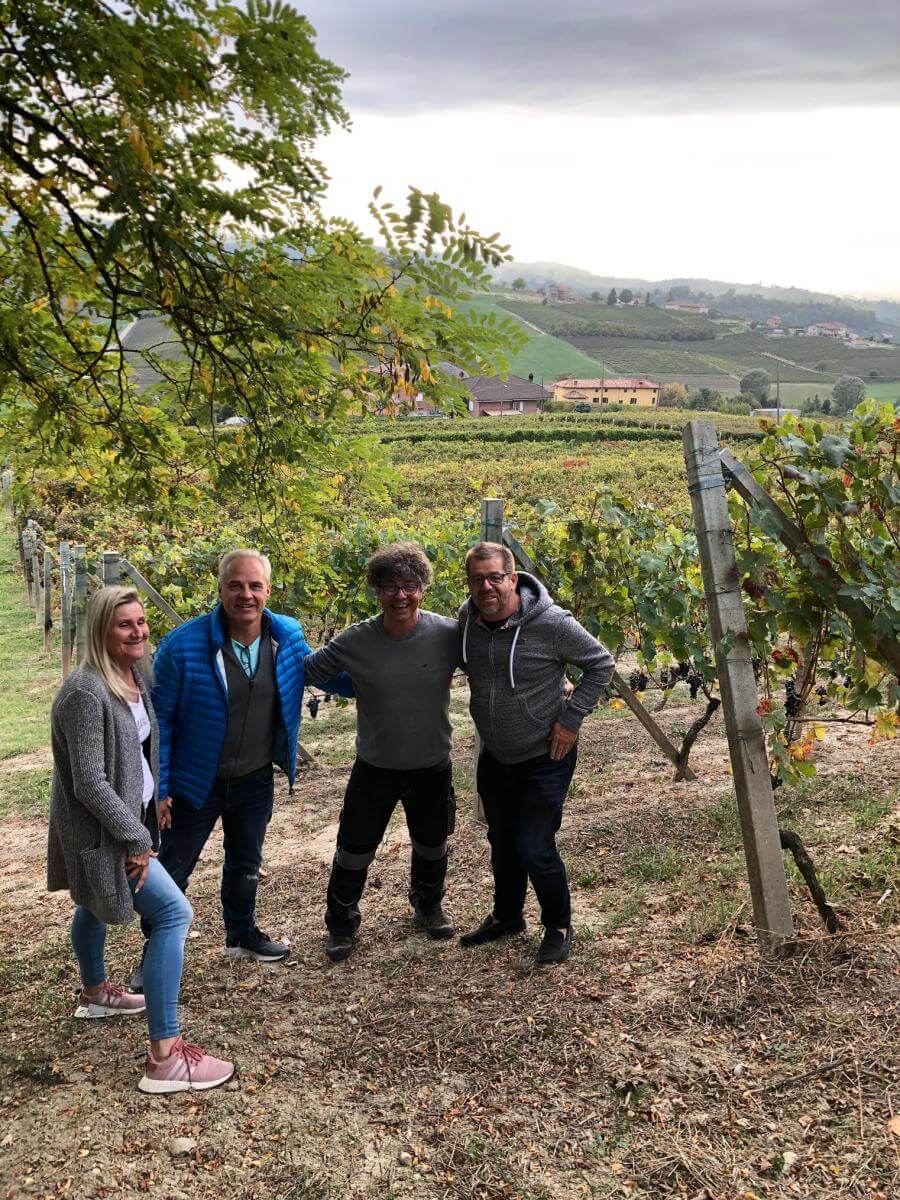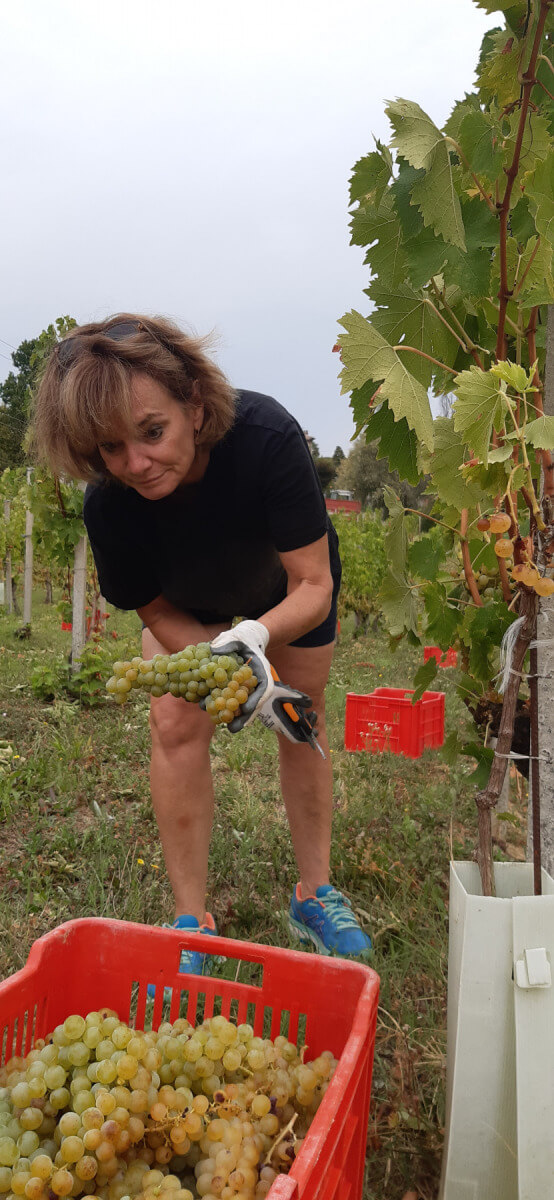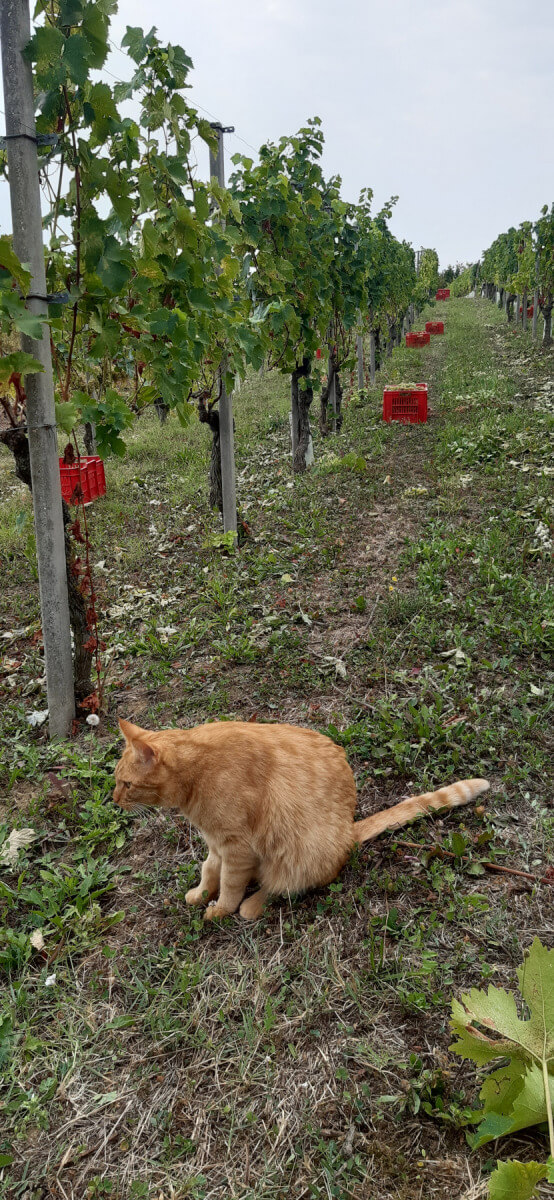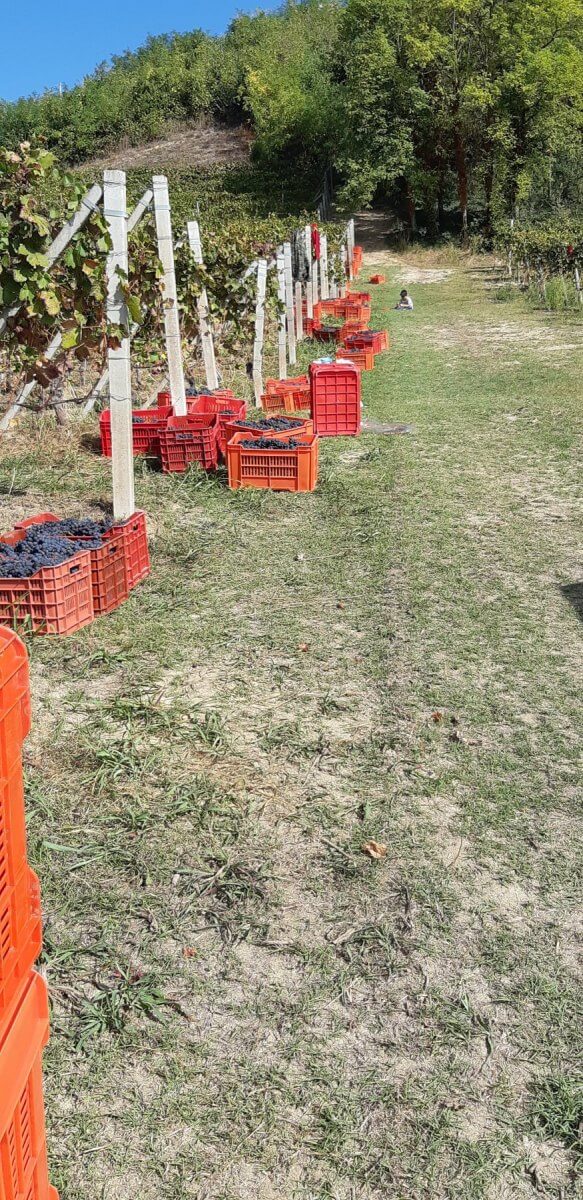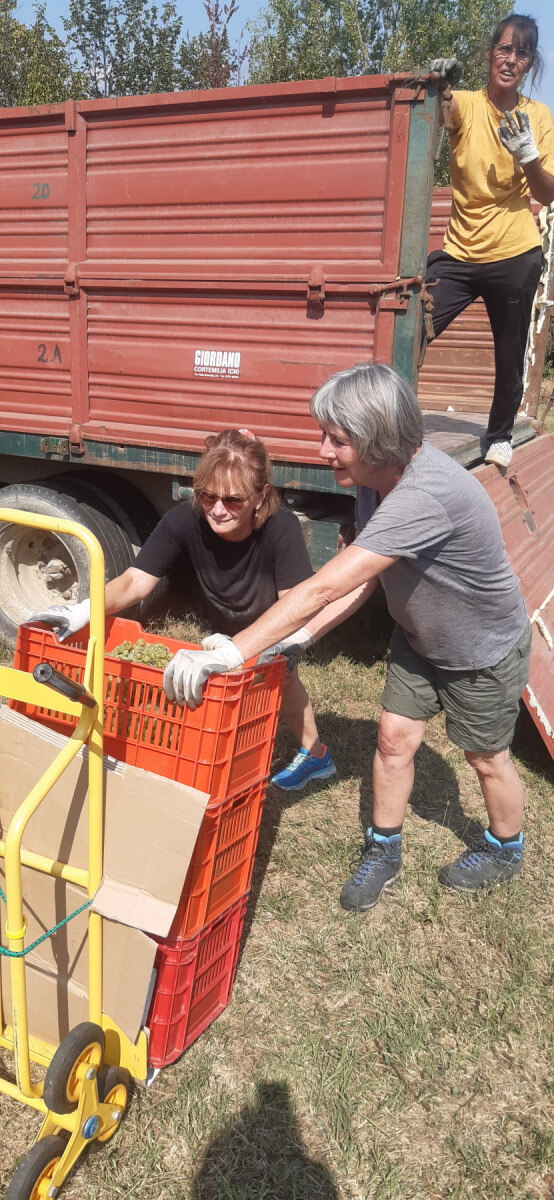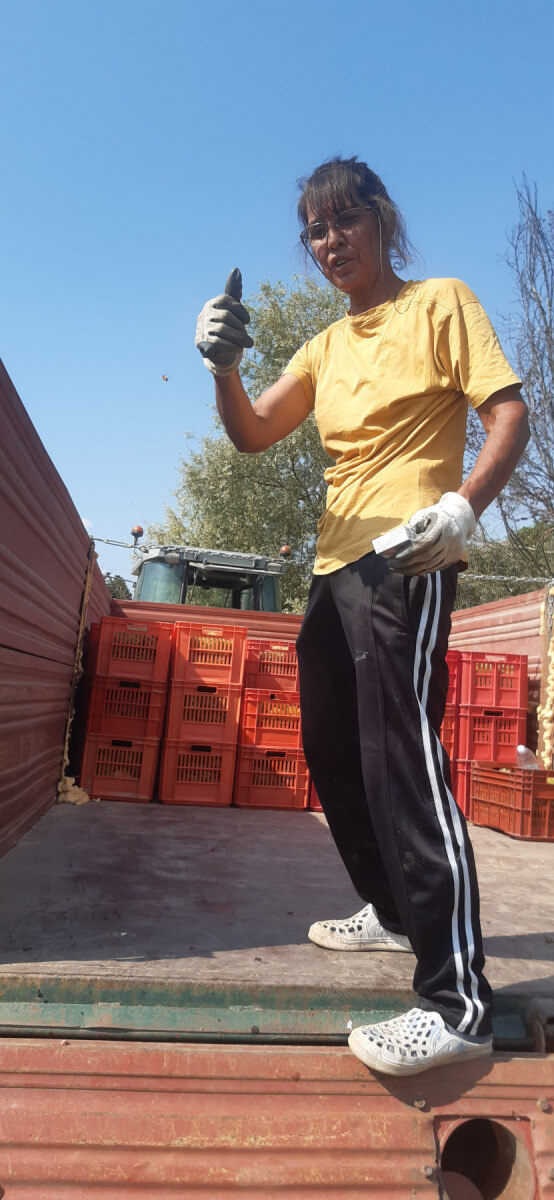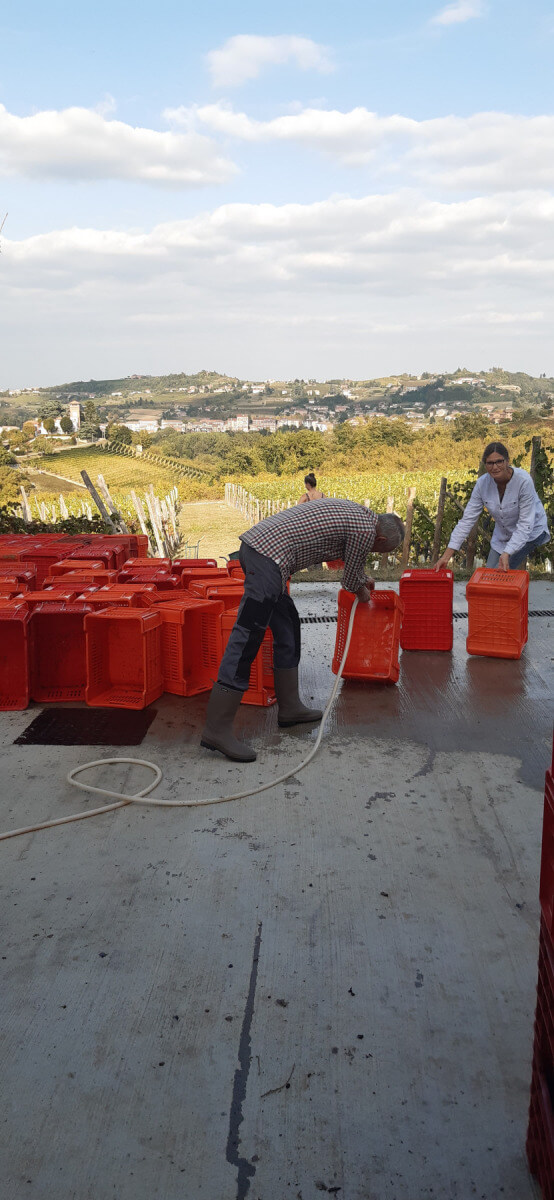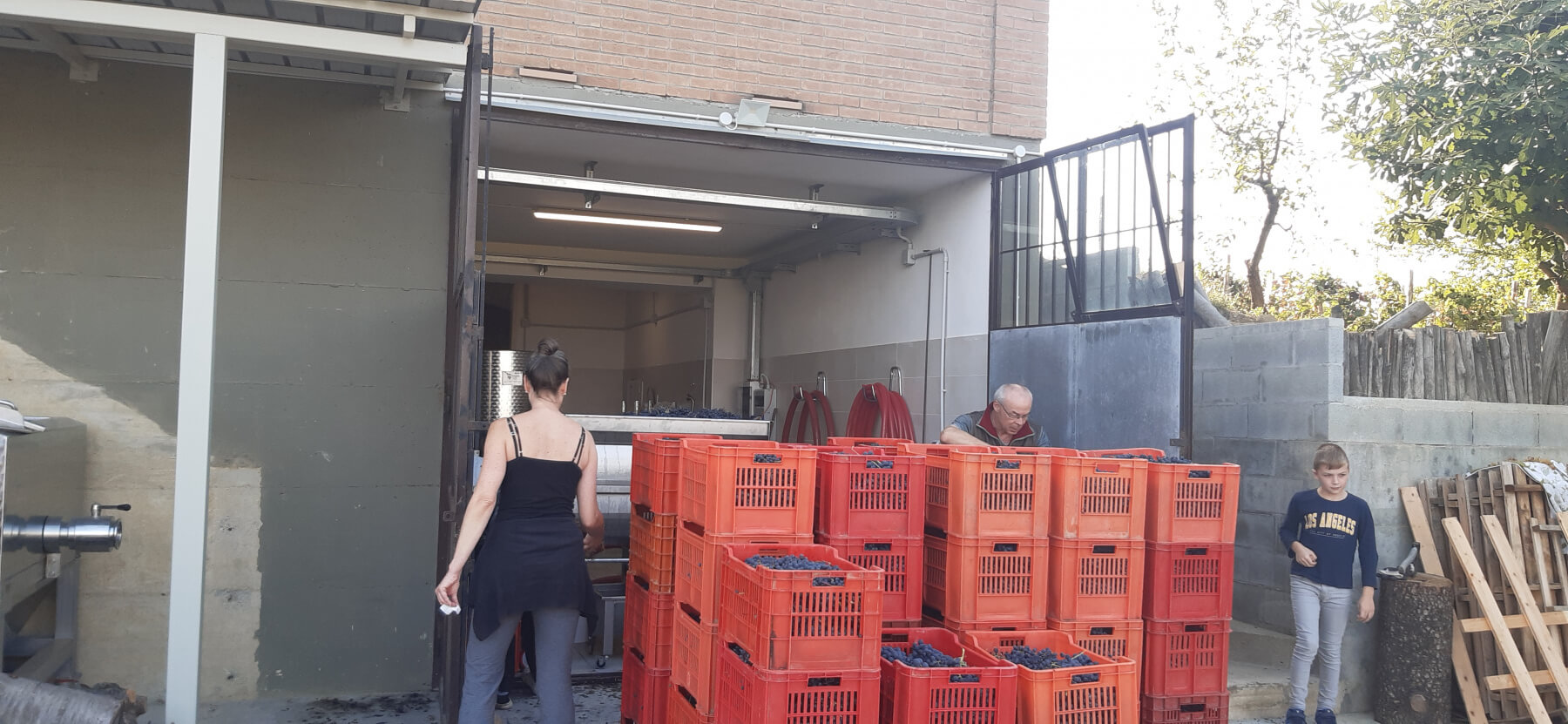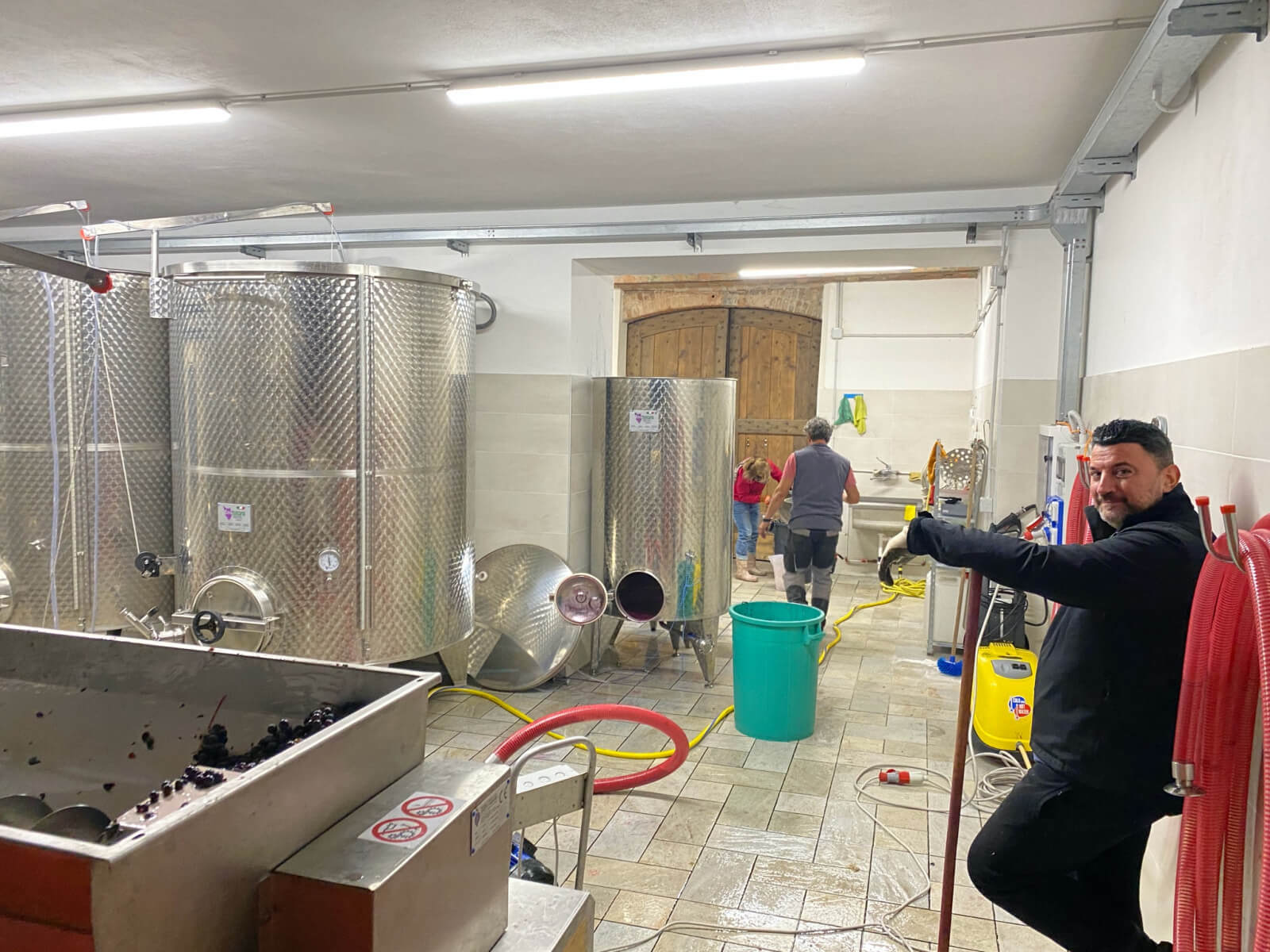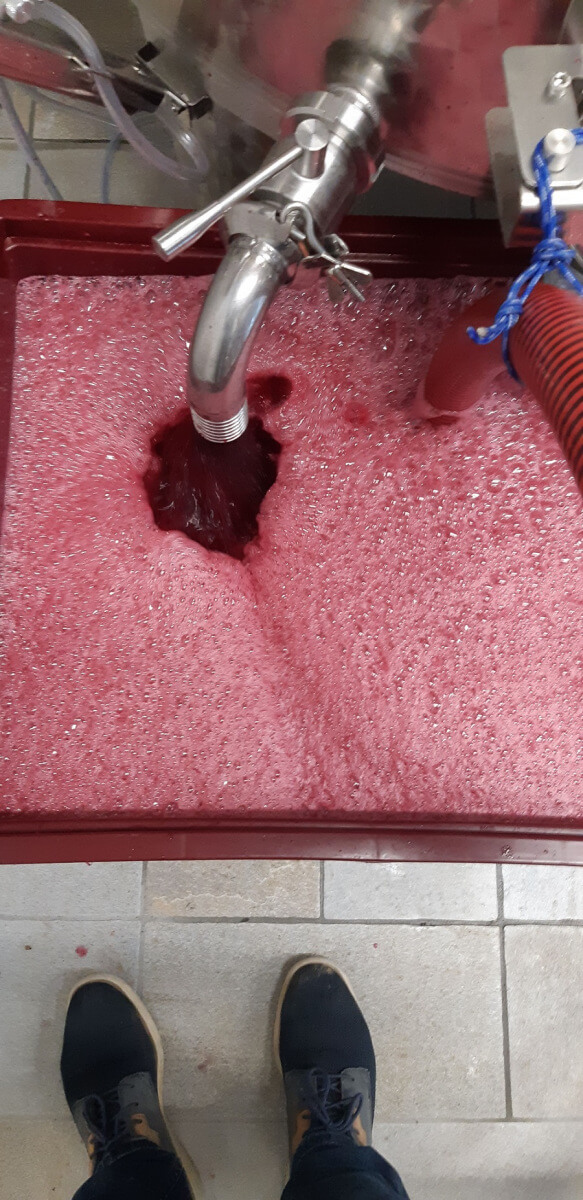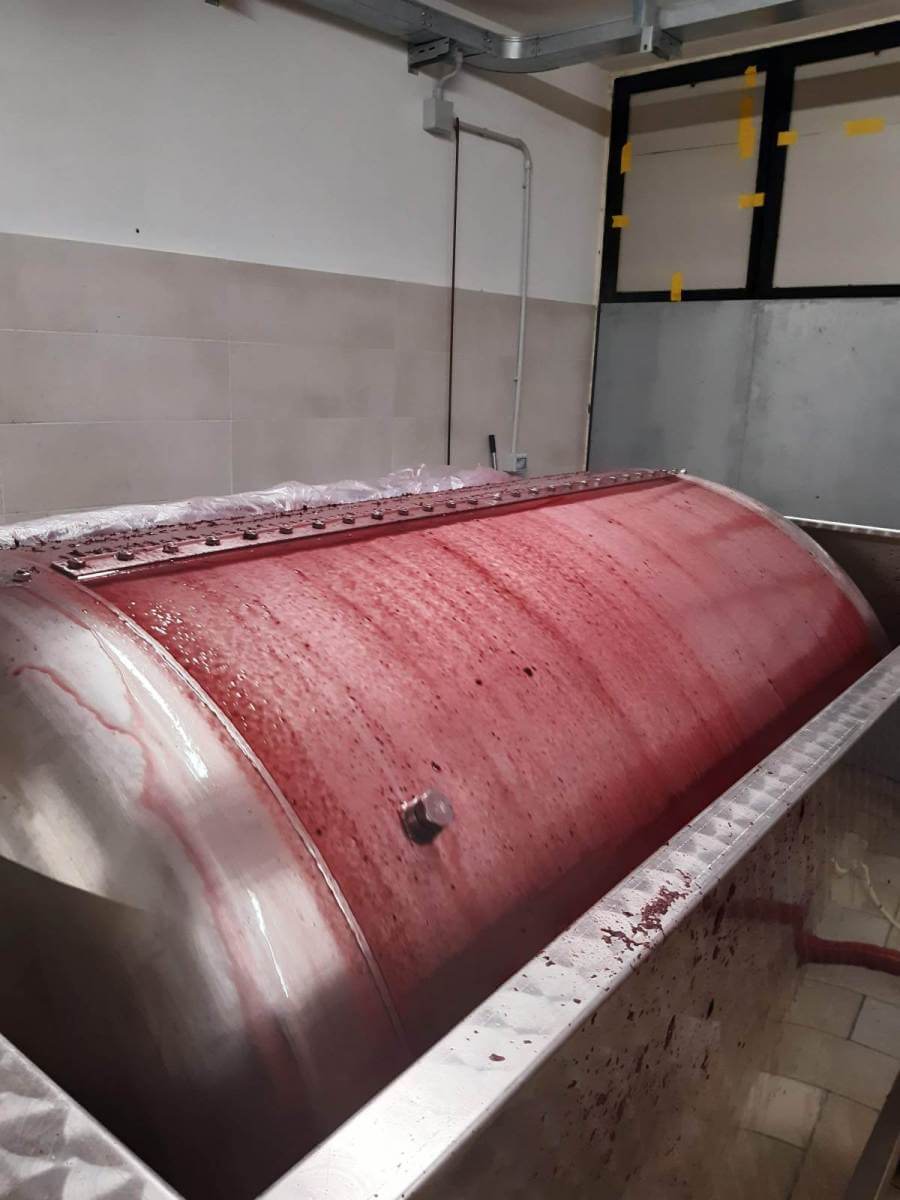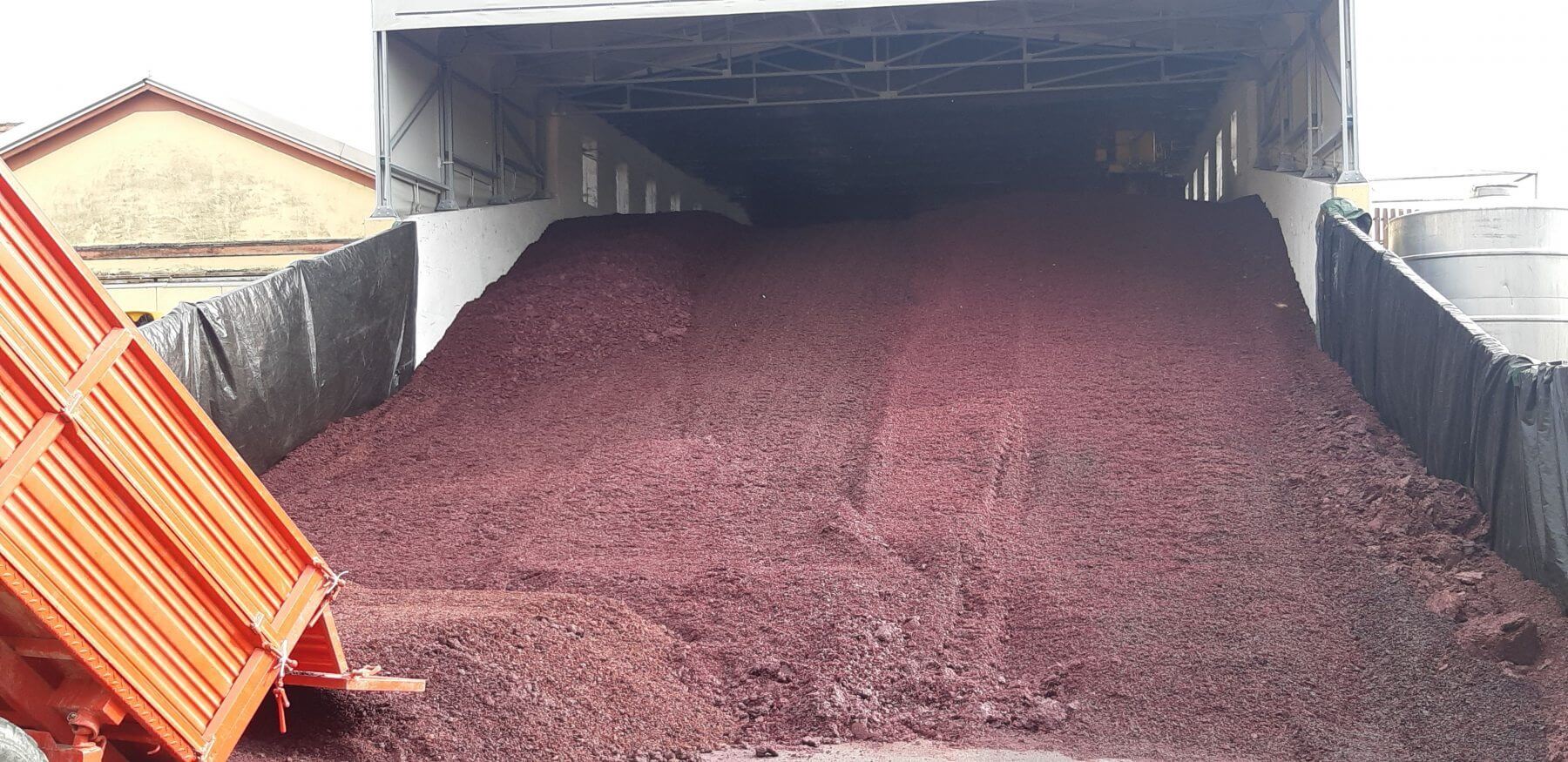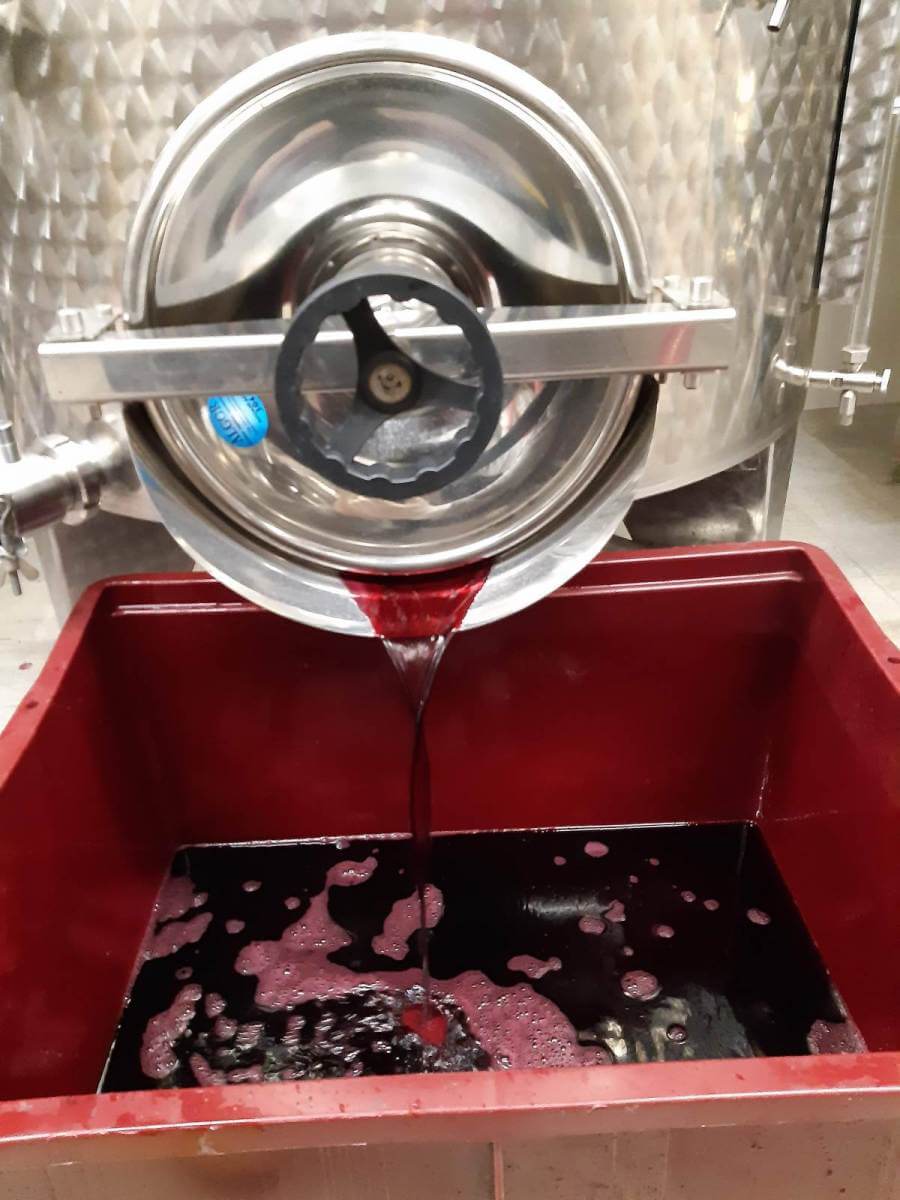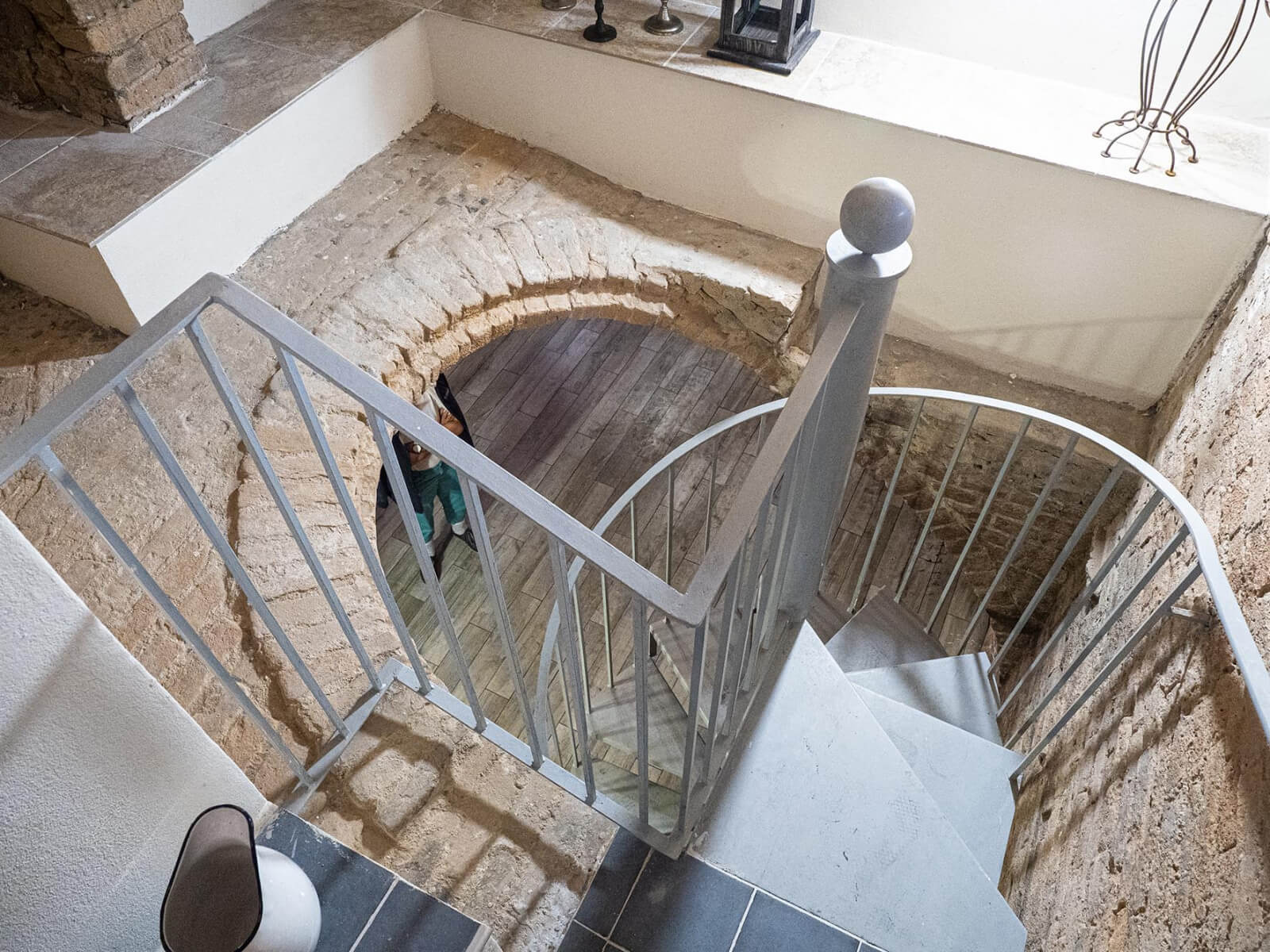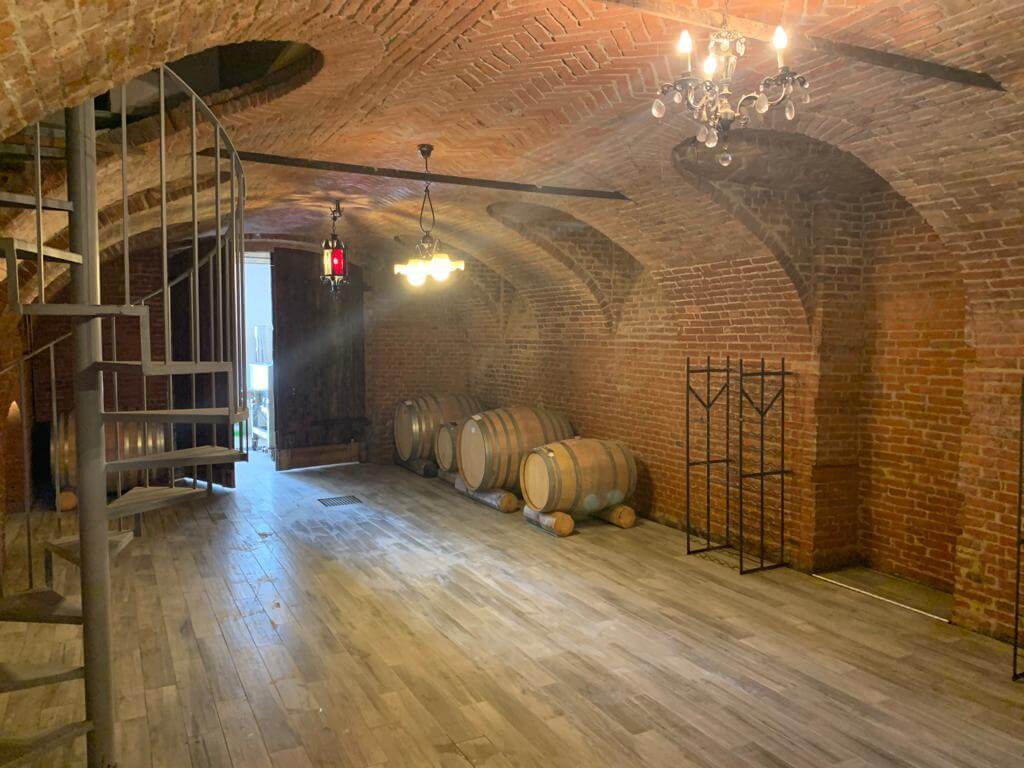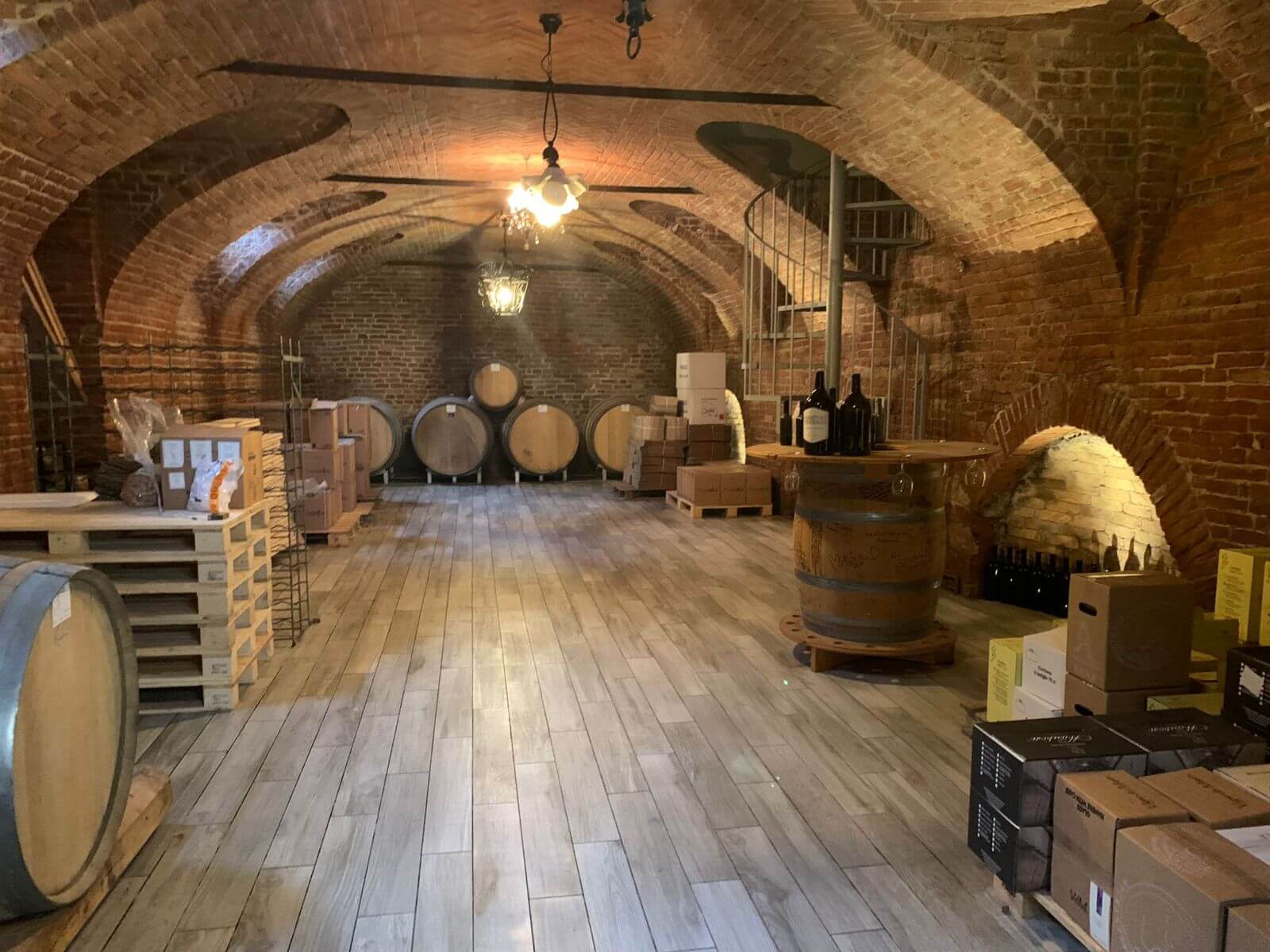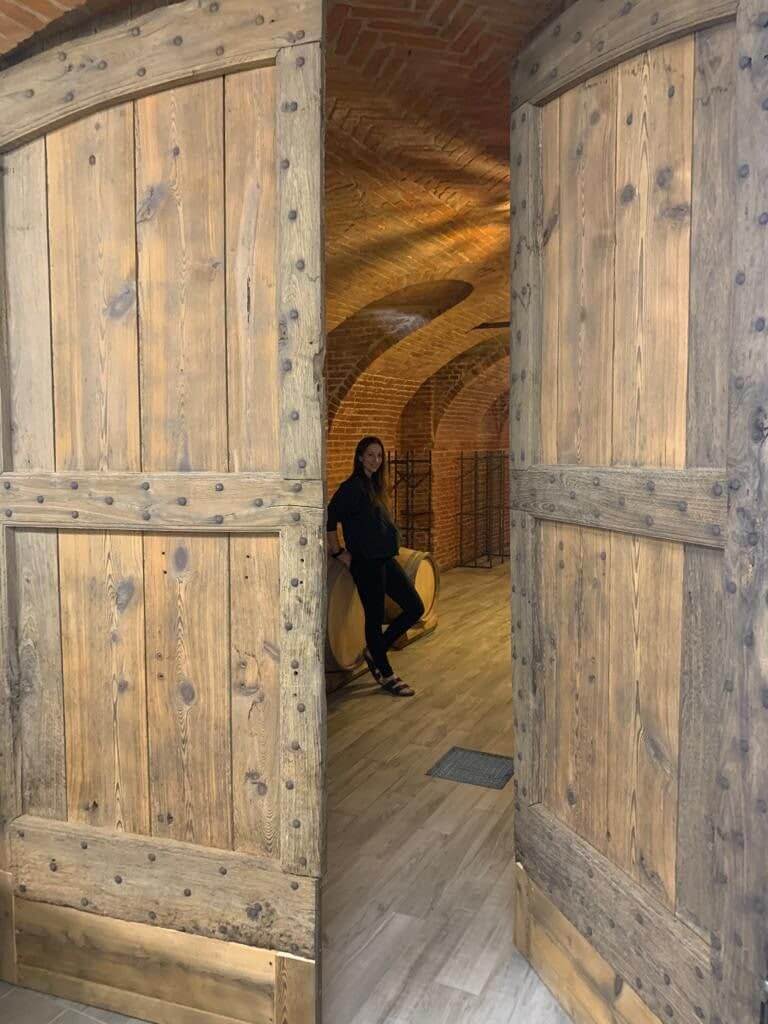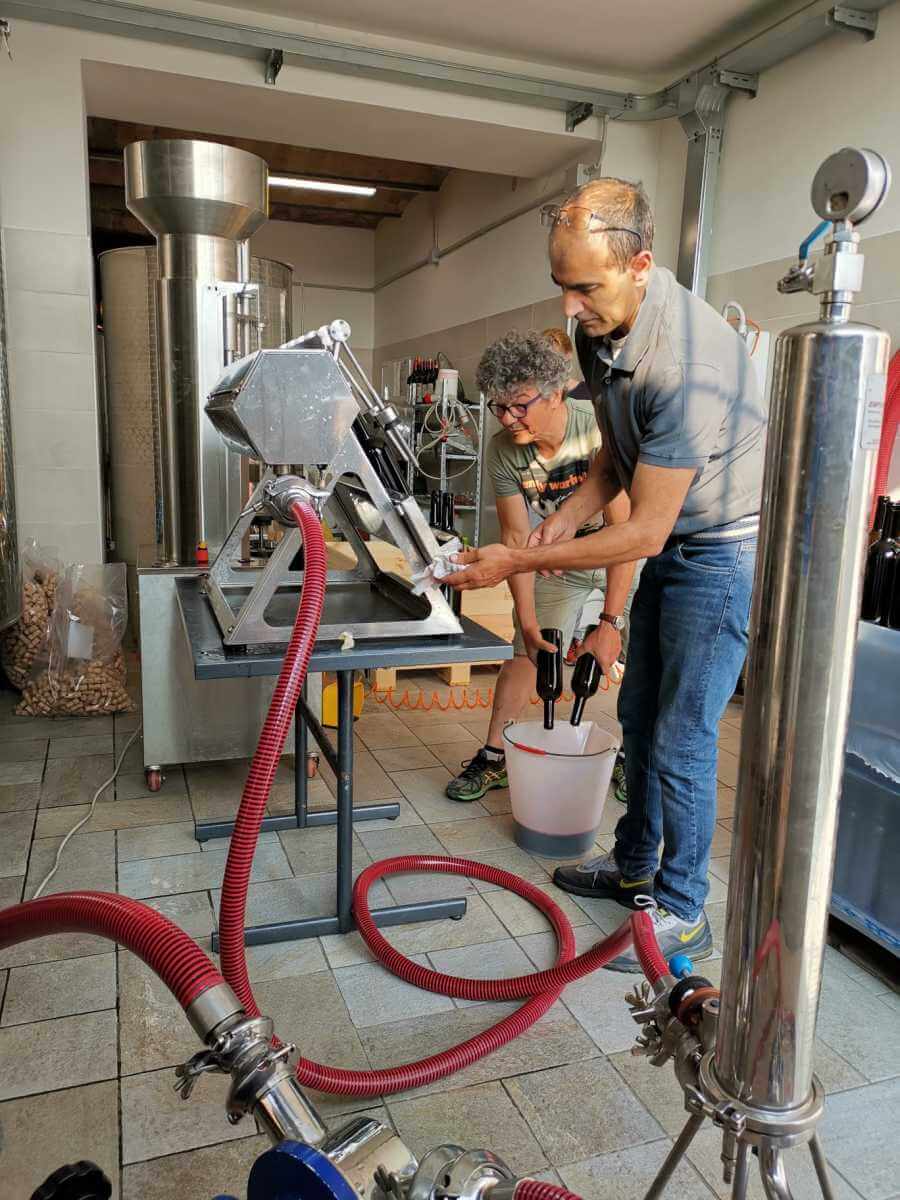Wines (production & trade)
In 2018, the cellar was still being rebuilt, so like my predecessor, I sold my Barbera & Moscato harvest to Daffara & Grasso, who then produced the first wine for me. But even before we started the renovation of the main house, we were working intensively on the restoration of the historic cellar as well as the complete first-time construction of our own modern winery.
The vineyard comprises 3 separate plots totalling 2 hectares. Directly below the house, the old Barbera and Moscato grapes form the basis for production and serve as a show vineyard. The main parcel covers about 3’000 square metres of Moscato and about 3’800 square metres of Barbera grapes on the left side of the house. Next to this, we have planted Nebbiolo on about 4’700 square metres in 2019.
The second parcel with 4’200 square metres and about 30 to 40 years old Barbera vines is located about 500 metres from the winery with top exposure to the south-west. The third parcel of 6’400 square metres was also replanted in 2019 and includes about 2’300 square metres of Arneis and about 4’150 square metres of Pinot Noir.
The vineyard had to be completely rebuilt and equipped with about 1’200 cement and 220 wooden poles; in addition, there were about 60 (sixty!) kilometres of wire and thousands of nuts and flanges needed for fixing.
The cantina consists of two parts: the historic cellar of about 100 square metres, a vaulted cellar with original bricks, where the wines mature in large and used wooden barrels; an ideal room for wine tastings for about 25 to 30 people. The modern cellar is equipped with two INOX tanks of 30 hl, two of 25 hl, one each of 20 and 15 hl, and two smaller tanks of 10 and 5 hl. The cellar has a modern de-stemming and milling machine, a pump, and a second-hand wine press from 1993.
The cellar has the ideal size to process around 15’000 kilograms of grapes, which will eventually become around 13’500 litres of wine. It has been in operation since 2019 and in autumn 2021, the third harvest could already be successfully processed.
In 2019 I was able to process Barbera independently for the first time. This resulted in 3 wines from the same grape, which could not be more different. “Adagio” a typical fresh and acidic wine and “Pomposo”, vinified as a late harvest, powerful and complex. This resulted in “Sinfonia”, an assemblage of the two. All 3 matured for about 10 months in steel tanks before they were transferred to the wooden barrels where they matured in contact with old wood for 10 months.
In March, the wine was validated by “ValorItalia”, which awarded the DOCG rating to the first production. This was followed by bottling and distribution from summer 2021. The first wines before 2018 are all sold out, as they were mainly intended for crowdfunding participants.
My first own production of the 3 Barberas, vintage 2019, was given the additional designation “Primo Volo” and resulted in a small but qualitatively all the better harvest. A total of around 700 bunches each of “Adagio” and “Pomposo” and around 1,400 bunches of “Sinfonia”. I continue to have the Moscato d’Asti “Staccato” produced by Daffara & Grasso. As of autumn 2021, the “Adagio” 2019 was already sold out and “Sinfonia” and “Pomposo” should follow soon.
Since autumn 2021, I have also been able to harvest the young plants and can speak of a full range for the first time. Currently, about 1,050 litres of Arneis, 2,500 litres of Barbera “Adagio”, 2,000 litres of Barbera “Sinfonia” (late harvest), 1,350 litres of Nebbiolo and about 1,700 litres of Pinot Nero are ripening in the part of the modern cellar. Soon the wines will go into the further maturing process and some of them will already be packaged if no maturing in the Tonneau is planned.
As a wine connoisseur of many years and importer for various traders, I have specialised mainly in Italian wines. Only in Italy are about 400 different grape varieties cultivated which are suitable for wine production, including numerous autochthonous varieties. Besides developing my own wine production, I continue to import Italian wines with a focus on Piedmont, Sardinia, and Tuscany.
Azienda Vitivinicola PIAZZO COMM. ARMANDO, di Piazzo Marina, 12051 Alba (CN)
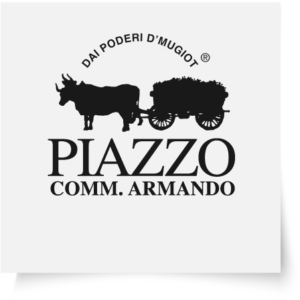 The winery was founded as a family business in the early 1960-ies. It cultivated few hectares of Nebbiolo in a small fraction of Alba, in 1979 the first Barbaresco was produced, this wine’s success gave the family the opportunity to expand to 70 ha and onto the “Roero” habitat. With Roero Arneis, Chardonnay, Sparkling Wine, Dolcetto, Nebbiolo Roero, Barbera d’Alba and Moscato d’Asti they produced the typical piedmonts wines. The business was continued to the 3rd generation and produced excellent and typical Langhe- and Roero wines.
The winery was founded as a family business in the early 1960-ies. It cultivated few hectares of Nebbiolo in a small fraction of Alba, in 1979 the first Barbaresco was produced, this wine’s success gave the family the opportunity to expand to 70 ha and onto the “Roero” habitat. With Roero Arneis, Chardonnay, Sparkling Wine, Dolcetto, Nebbiolo Roero, Barbera d’Alba and Moscato d’Asti they produced the typical piedmonts wines. The business was continued to the 3rd generation and produced excellent and typical Langhe- and Roero wines.
Azienda Agricola Bricco Maiolica s.s.a., 12055 Diano d’Alba

Founded in 1928 as an agricultural business by the Accomo family, under Beppe the property developed into a winery with a few hectares. Through his marriage to Claudia Castella, who came from a wine family as well, the two wineries merged into one. Ever since under the “Bricco Maiolica” a variety of vines are cultivated that reflect this exact mixture of tradition and modernity. The different vines being Sauvignon Fumé, Chardonnay, Dolcetto, Barbera, Merlot, Pinot Nero and Nebbiolo.
Azienda Agricola “Bric Castelvej”, Gallino Domenico, CANALE D’ALBA

This Farm was founded by Domenico Callino in 1956 and further developed by Mario (shown in picture) and his sun Cristiano, who were both oenologists. A picturesque family business, innovative and still traditional in choosing the grape variety they kept the ground rich in sand, an ideal habitat for their Roero Arneis DOCG, Barbera DOC, Nebbiolo DOC, as well as their Roero DOCG.
Carlin de Paolo, di Ponte Giancarlo & C. s.n.c., San Damiano d’Asti
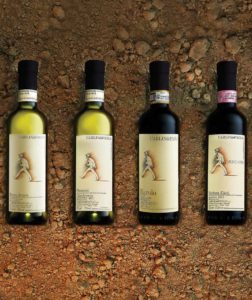 Another family business as it’s imagined: great-grandfather Paolo gave the business to the grandfather Carlin as it’s preserved in their name. Today in the 4th generation Franco, Giusy, Giancarlo, Davide, Lorenzo, Paolo, Cinzia, Ornella, Mario, Francesca, Carlotta, Simone, Chiara and Serena are all involved. The tasting rooms are decorated with their many prices and reward the risk of innovation constantly taken by Nonno Carlin. The choice in wine is further complicated by their outstanding 22 different sorts.
Another family business as it’s imagined: great-grandfather Paolo gave the business to the grandfather Carlin as it’s preserved in their name. Today in the 4th generation Franco, Giusy, Giancarlo, Davide, Lorenzo, Paolo, Cinzia, Ornella, Mario, Francesca, Carlotta, Simone, Chiara and Serena are all involved. The tasting rooms are decorated with their many prices and reward the risk of innovation constantly taken by Nonno Carlin. The choice in wine is further complicated by their outstanding 22 different sorts.
MARCHISIO FAMILY ORGANIC ESTATE S.S.A., Castellinaldo d’Alba
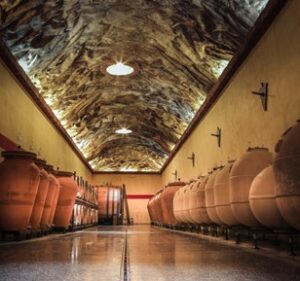 Since the late 18th century, the Farm is in the hands of the family Marchisio. For generations the winery in the region of Roero is establishing itself as a biodynamic and ecological business. Their pioneering spirit is also reflected in the fact that Sergio was the first to vinify the Arneis in Castellinalda. He was also the first to produce a Sparkling Wine from Arneis and also the first to reintroduce the vinification of red and white wines in amphoras. In this he is supported by his wife Elena and his children Fabio, Ivo, Marisa and Francesca. The team is completed by oenologist Gianfranco Cordero and the agronomist Massimo Pinna. This diverse knowledge is mirrored by the power of their wines.
Since the late 18th century, the Farm is in the hands of the family Marchisio. For generations the winery in the region of Roero is establishing itself as a biodynamic and ecological business. Their pioneering spirit is also reflected in the fact that Sergio was the first to vinify the Arneis in Castellinalda. He was also the first to produce a Sparkling Wine from Arneis and also the first to reintroduce the vinification of red and white wines in amphoras. In this he is supported by his wife Elena and his children Fabio, Ivo, Marisa and Francesca. The team is completed by oenologist Gianfranco Cordero and the agronomist Massimo Pinna. This diverse knowledge is mirrored by the power of their wines.
LA CANTINA DEL BOVALE, Terralba, Sardegna
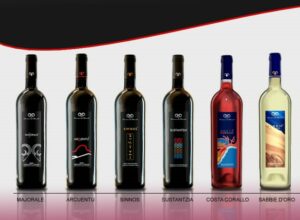 About 30 years ago this cantina was established and after 10 years of careful cultivation and several vilifications the production of the Bovale Terralba as well as the Cannonau, Monica and Vermentino was founded. A beautiful small winery in the valley where the ground is made from sand, sea salt and coral. This mixture makes for extraordinary wines with original notes.
About 30 years ago this cantina was established and after 10 years of careful cultivation and several vilifications the production of the Bovale Terralba as well as the Cannonau, Monica and Vermentino was founded. A beautiful small winery in the valley where the ground is made from sand, sea salt and coral. This mixture makes for extraordinary wines with original notes.
Cantina Li Duni, Badesi, Sardegna
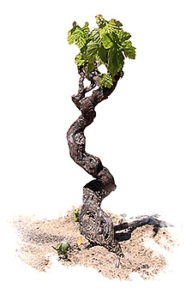 therefore are constructed on sand. This specific location in the Golfo dell’Asinara gives the Farm as one of the only ones in the world the opportunity to cultivate on original vines, as it was done hundreds of years ago. The ancient plants – raised under the Guyot and Albarello technique – produce the astounding amount of up to 500g/m²! The sandy/salty location make the use of chemicals almost redundant. The business produces about 40’000 bottles every year, offering mostly the following wines: Vermentino di Gallura Sup., Vermentino di Sardegna, under the red wines you find the label Isola di Nuraghi IGT with its different autochthonous grape varieties, as well as a rosé made with Cannonau grapes.
therefore are constructed on sand. This specific location in the Golfo dell’Asinara gives the Farm as one of the only ones in the world the opportunity to cultivate on original vines, as it was done hundreds of years ago. The ancient plants – raised under the Guyot and Albarello technique – produce the astounding amount of up to 500g/m²! The sandy/salty location make the use of chemicals almost redundant. The business produces about 40’000 bottles every year, offering mostly the following wines: Vermentino di Gallura Sup., Vermentino di Sardegna, under the red wines you find the label Isola di Nuraghi IGT with its different autochthonous grape varieties, as well as a rosé made with Cannonau grapes.
Terre Nere Campigli Vallone, Castelnuovo dell’Abate, Montalcino

After having enough of the banking world and working at a desk, Pasquale founded this Farm in the 1990-ies after falling for a small hillside 10km southeast of Montalcino and buying these 10 hectares. Afterwards his brother Gaetano joined him, expanding the Farm with another 10 ha. The daughters Francesca and Federico. Not only joined the business as well, but decided to get the official education to become ecological wine grower. Together they produce Sangiovese and Cabernet Sauvignon with the help of the “Cordone Speronato” technique with a density of 4’500 plants per hectare.
AZIENDA GIULIANO NOTA, Monticello D’Alba
 Founded in 1951 by Antonio Nota with only a few hundred bottles, the winery was expanded by son Giuliano and his wife Elida and professionalized. In the meantime, the winery is still within the family in its 3rd generation. The siblings Fabrizio, Massimo and Serena cultivate the winery today. They take a classical approach to the art of wines and focus on the production of Roera, Arneis and Favorita within the white wines and Nebbiolo, Barbera and Dolcetto within the reds. The yearly production should be around 45‘000 bottles and is done innovatively and gentle.
Founded in 1951 by Antonio Nota with only a few hundred bottles, the winery was expanded by son Giuliano and his wife Elida and professionalized. In the meantime, the winery is still within the family in its 3rd generation. The siblings Fabrizio, Massimo and Serena cultivate the winery today. They take a classical approach to the art of wines and focus on the production of Roera, Arneis and Favorita within the white wines and Nebbiolo, Barbera and Dolcetto within the reds. The yearly production should be around 45‘000 bottles and is done innovatively and gentle.
